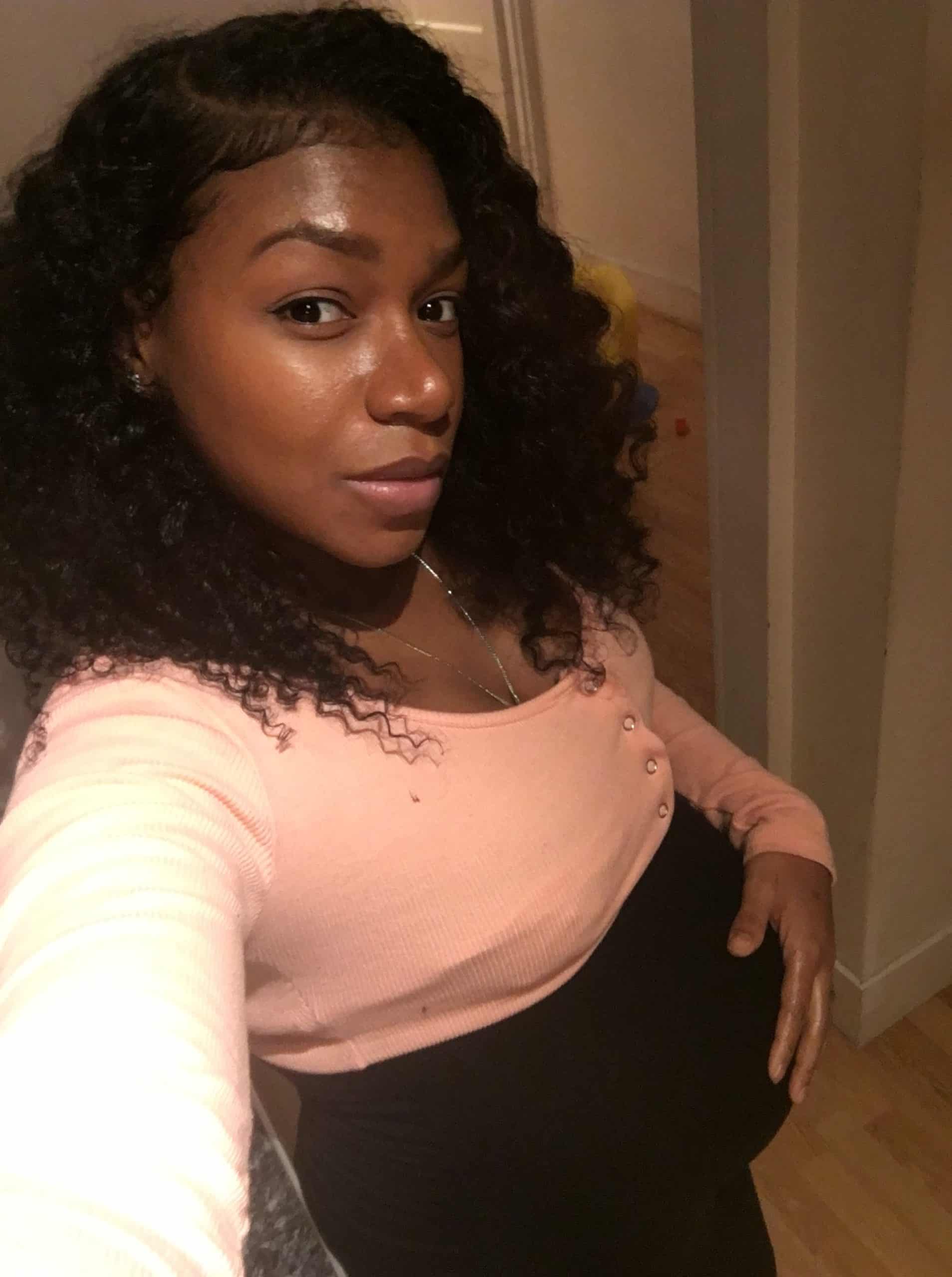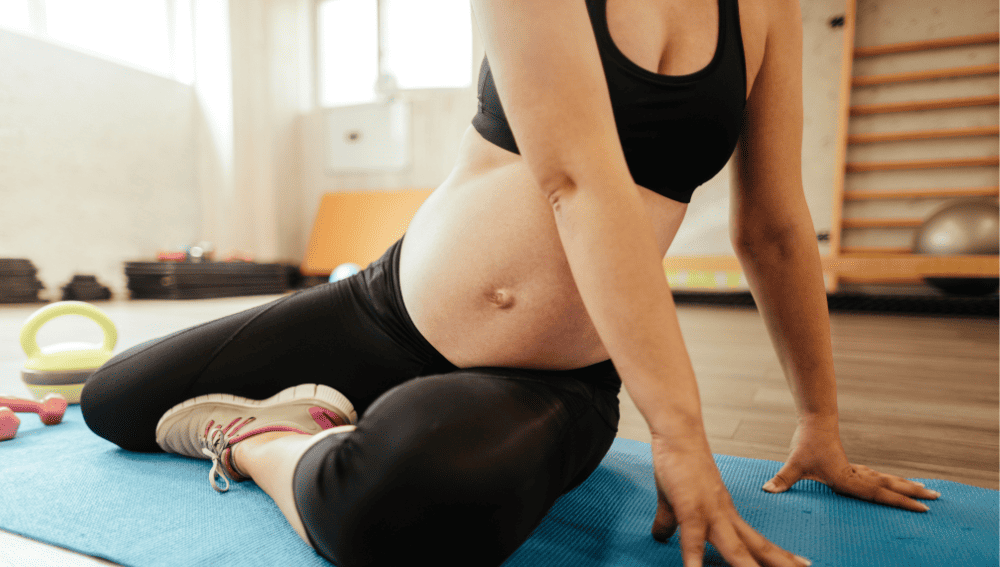Many women struggle with reducing their pregnancy belly after giving birth. Even after five years, it can be challenging to get rid of this stubborn fat. However, with the right approach, it is possible to reduce post-pregnancy weight and achieve a flatter belly.
Understanding Post-Pregnancy Weight is the first step towards reducing pregnancy belly. During pregnancy, a woman’s body undergoes significant changes to support the growing fetus, which can result in weight gain.
After childbirth, the body needs time to recover and return to its pre-pregnancy state. However, many women struggle to lose the extra weight, especially around the belly area.
Role of Diet in Reducing Pregnancy Belly is crucial. A healthy and balanced diet is essential for postpartum recovery and weight loss. Eating nutrient-dense foods and avoiding processed and high-sugar foods can help reduce belly fat.
A diet rich in protein, fiber, and healthy fats can also help keep you feeling full and satisfied, reducing the temptation to overeat.
Key Takeaways
- Understanding Post-Pregnancy Weight is essential for reducing pregnancy belly.
- A healthy and balanced diet is crucial in reducing pregnancy belly.
- Exercise and physical activities are important for reducing pregnancy belly.
Understanding Post-Pregnancy Weight
After giving birth, many women desire to lose the pregnancy weight and reduce their belly size. However, it is important to understand that post-pregnancy weight loss is a gradual process that requires patience and dedication.
There are several factors that contribute to post-pregnancy weight, including hormonal changes and genetic factors.
Hormonal Changes
During pregnancy, the body undergoes significant hormonal changes. These changes can affect the body’s metabolism and lead to weight gain.
Hormones such as estrogen and progesterone increase during pregnancy, which can cause the body to retain water and fat. Additionally, the hormone relaxin can cause the ligaments in the pelvis to loosen, which can lead to a shift in posture and affect the abdominal muscles.
After giving birth, hormone levels gradually return to normal. However, it can take several months for the body to fully recover. Breastfeeding can also affect hormone levels and aid in post-pregnancy weight loss.
Genetic Factors
Genetic factors can also play a role in post-pregnancy weight. Some women may have a genetic predisposition to retaining fat in certain areas, such as the belly or hips. Additionally, some women may have a slower metabolism, which can make it more difficult to lose weight.
It is important to note that genetics do not determine a person’s entire weight destiny. Healthy eating habits and regular exercise can help counteract genetic factors and promote weight loss.
Overall, understanding the factors that contribute to post-pregnancy weight can help women develop a realistic and effective weight loss plan.
By incorporating healthy habits and being patient, women can achieve their desired weight and reduce their pregnancy belly.
Role of Diet in Reducing Pregnancy Belly
Healthy Eating Habits
Diet plays a crucial role in reducing pregnancy belly, and developing healthy eating habits can help achieve this goal.
A healthy diet should include a variety of nutrient-dense foods such as vegetables, fruits, lean protein, healthy fats, and whole grains. It is essential to avoid processed and sugary foods that can lead to weight gain and bloating.
Aim for a balanced meal plan that includes all the necessary vitamins and minerals, such as iron, vitamin C, and vitamin A. Eating a variety of healthy foods can help reduce the calorie intake and promote weight loss.
Importance of Hydration
Drinking enough water is also crucial for reducing pregnancy belly. Water helps flush out toxins and waste products from the body, which can contribute to bloating and inflammation.
It also helps maintain the body’s fluid balance and prevents dehydration, which can lead to water retention and bloating.
Aim to drink at least 8-10 glasses of water per day, and more if you are breastfeeding. You can also include other hydrating fluids such as herbal tea, coconut water, and fresh juices. However, it is essential to avoid sugary drinks and alcohol, which can lead to weight gain and bloating.
In conclusion, developing healthy eating habits and staying hydrated can help reduce pregnancy belly after five years. A balanced meal plan that includes nutrient-dense foods and adequate hydration can promote weight loss and reduce bloating.
Exercise and Physical Activities
Regular exercise and physical activity can help reduce pregnancy belly even after 5 years. Below are some effective exercises and physical activities that can help achieve this goal.
Cardiovascular Exercises
Cardiovascular exercises are great for burning calories and improving overall health. Walking, jogging, and cycling are some of the best cardiovascular exercises to reduce pregnancy belly. These exercises not only burn calories but also improve metabolism and help in weight loss.
Strength Training
Strength training is another effective way to reduce pregnancy belly. Squats, lunges, and planks are some of the best strength training exercises that help in toning abdominal muscles and improving core strength. These exercises also help in improving posture and reducing diastasis recti.
Yoga and Deep Breathing
Yoga and deep breathing exercises are great for reducing stress and improving overall health. Deep belly breathing, pelvic tilts, and transverse holds are some of the best yoga exercises that help in reducing pregnancy belly.
Kegels are also great for strengthening pelvic floor muscles and improving core strength.
Incorporating these exercises and physical activities into daily exercise habits can help reduce pregnancy belly even after 5 years. It is important to maintain regular exercise and physical activity to achieve the desired results.
Importance of Breastfeeding
Breastfeeding is an important aspect of postpartum recovery and can help reduce pregnancy belly after 5 years. Breastfeeding provides numerous benefits for both the mother and the baby. Breast milk contains essential nutrients that are easily digestible and help promote healthy growth and development in infants.
Research has shown that breastfeeding can also help reduce the risk of certain health conditions in both the mother and the baby.
Breastfeeding has been linked to a reduced risk of breast cancer, ovarian cancer, and type 2 diabetes in mothers. In babies, breastfeeding has been associated with a reduced risk of allergies, asthma, and obesity.
In addition to the health benefits, breastfeeding can also help new mothers bond with their babies. The skin-to-skin contact and close physical proximity can help promote feelings of love and attachment, which can be beneficial for both the mother and the baby.
Breastfeeding can also help new mothers lose weight and reduce pregnancy belly. Breastfeeding burns calories and can help new mothers return to their pre-pregnancy weight more quickly.
Breastfeeding mothers should aim to consume a healthy and balanced diet to ensure that they are getting the nutrients they need to produce breast milk.
Overall, breastfeeding is an important aspect of postpartum recovery and can help new mothers reduce pregnancy belly after 5 years.
Breastfeeding provides numerous benefits for both the mother and the baby, including improved health outcomes and increased bonding opportunities.
Medical Interventions
There are several medical interventions that can help reduce postpartum belly after 5 years. These interventions should only be considered after consulting with a healthcare provider.
Consulting a Healthcare Provider
A healthcare provider can help determine the best course of action to reduce postpartum belly. They may recommend physical therapy or surgical options depending on the severity of the belly and the patient’s overall health.
Physical Therapy
Physical therapy can help strengthen the transverse abdominis, which is the muscle responsible for supporting the abdominal wall. This can help reduce the appearance of postpartum belly and also improve incontinence issues that may have resulted from pregnancy.
A physical therapist can create a personalized exercise plan for the patient to target this muscle.
Surgical Options
In some cases, surgery may be necessary to reduce postpartum belly. A c-section or cesarean delivery may have caused excess skin and tissue to accumulate in the abdominal area. A tummy tuck or abdominoplasty can remove this excess tissue and tighten the abdominal muscles.
However, surgery should only be considered after other options have been explored and with the guidance of a healthcare provider.
Overall, reducing postpartum belly after 5 years can be a challenging process. However, with the help of a healthcare provider and the right interventions, it is possible to achieve a flatter and more toned abdominal area.
Mental Health and Self-Care
Dealing with Postpartum Depression
Postpartum depression is a common condition that affects many women after giving birth. It is important to recognize the signs and symptoms of postpartum depression and seek help if needed.
Some common symptoms of postpartum depression include feelings of sadness, anxiety, and irritability, changes in appetite or sleep patterns, and difficulty bonding with the baby.
There are several ways to deal with postpartum depression, including therapy, medication, and support groups. It is important to talk to a healthcare provider to determine the best course of treatment for individual needs.
Therapy can be helpful in addressing underlying issues and developing coping strategies. Medication can also be effective in treating symptoms of depression.
Importance of Self-Love
Self-love is an important aspect of mental health and well-being. It is important for new mothers to take time for themselves and prioritize their own needs. This can include things like getting enough sleep, exercising, and engaging in activities that bring joy and relaxation.
Practicing self-love can also help to reduce stress and anxiety. Stress can have a negative impact on mental and physical health, and it is important to find ways to manage stress effectively. This can include things like meditation, deep breathing, or mindfulness exercises.
In addition to self-care practices, it can be helpful to seek support from friends and family. Having a support system can provide emotional support and help to reduce feelings of isolation. It is important to remember that it is okay to ask for help and to prioritize one’s own mental health and well-being.
More on weight loss:
Frequently Asked Questions
How long should I tie my stomach after delivery?
It is recommended to tie your stomach for at least 40 days after delivery. This helps to support the abdominal muscles and prevent the uterus from sagging. However, it is important to consult with your doctor before using any postpartum belly wrap or band.
How to reduce pregnancy belly after c-section?
After a c-section, it is important to wait until the incision has fully healed before starting any exercise or belly reduction program.
Once cleared by your doctor, exercises such as pelvic tilts, kegels, and gentle walking can help to strengthen the abdominal muscles. Additionally, a healthy diet and plenty of hydration can aid in reducing overall belly fat.
How to reduce pregnancy belly after 5 years exercise?
Consistent exercise and a healthy diet are key to reducing pregnancy belly after 5 years. Incorporating cardio and strength training exercises can help to tone the abdominal muscles and reduce overall belly fat.
It is important to consult with a fitness professional or doctor to create a safe and effective exercise program.
How can I lose belly fat after 4 years of delivery?
To lose belly fat after 4 years of delivery, it is important to focus on a healthy diet and consistent exercise routine. Incorporating cardio and strength training exercises can help to tone the abdominal muscles and reduce overall belly fat.
Additionally, reducing stress levels and getting enough sleep can aid in weight loss.
How can I lose my baby belly after years?
To lose your baby belly after years, it is important to focus on a healthy lifestyle that includes a balanced diet and consistent exercise routine.
Incorporating exercises that target the abdominal muscles can help to tone and strengthen them. Additionally, reducing stress levels and getting enough sleep can aid in weight loss.
Why do I still look pregnant after 5 years?
There are several reasons why someone may still look pregnant after 5 years. One reason may be due to diastasis recti, a condition where the abdominal muscles separate and create a bulge in the belly. Another reason may be due to excess weight or lack of exercise.
It is important to consult with a doctor or fitness professional to determine the cause and create a safe and effective plan to reduce the belly.

Iesha is a loving mother of 2 beautiful children. She’s an active parent who enjoys indoor and outdoor adventures with her family. Her mission is to share practical and realistic parenting advice to help the parenting community becoming stronger.



